Mexico, 1952.
Lives and works in Mexico City.
Pablo Ortiz-Monasterio
“Low Flying” from the serie: The Last City.
1995
Archival Pigment Print
Unique edition, certified, signed on the front and back, printed by the artist.
120 x 90 cm
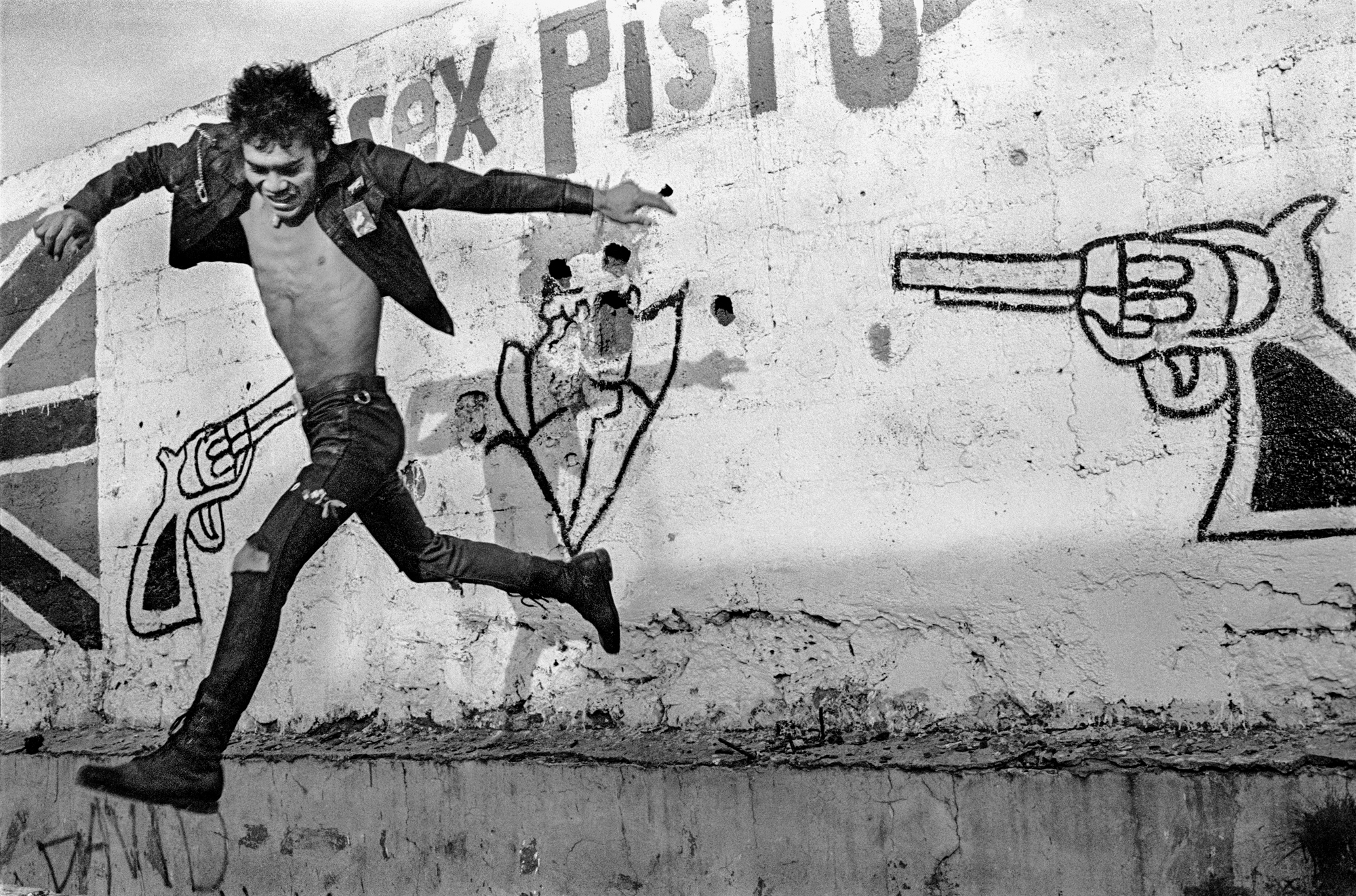
Approximate view with unframed print. Ask for exact available dimensions
Pablo Ortiz-Monasterio
Carpeta “Huichol: Sierra, desierto, Nueva York”
Special Edition Portfolio
10 photos and 2 slides (title handwritten by Pablo and James Oles' text) in fine-art inkjet print on cotton.
11 x 15 cm
Portfolio: Ed. 10 + 2 P.A.
“…The photographs of the Huichol by Pablo Ortiz Monasterio—taken on some twenty trips over the past three decades—reveal abundant evidence of cultural survival (what the Huichol call “la costumbre”), made possible by their extraordinary resistance to the religious, nationalist, and economic forces that have long assaulted—and that continue to assault—Indigenous communities everywhere. Though Ortiz Monasterio is also an outsider, he does not operate—like the anthropologist Lumholtz or the etnographer Diguet—as an old-fashioned preservationist, nor is he confident in the superiority of Western culture, nor is his work only destined for museum vitrines or archives. Rather, these complex images are the result of long and patient attempts at negotiation and collaboration, of working with the Huichol, amongst them, and ultimately making pictures as much for them as for audiences far from the Sierra Madre. In 1996, Fernando Ortiz Monasterio, an ecologist and engineer, was invited to design a bridge to allow the Huichol to safely cross a deep riverbed that became an impassable and dangerous torrent during the summer rains. An image by his brother Pablo records the bloody sacred sacrifice that celebrated its completion, just as he later documented a Huichol pilgrimage to another suspension bridge, in distant Brooklyn. Perhaps the only ethical position of the contemporary photographer engaged with Indigenous subjects is to work as a bridge or conduit, as a sanctioned recorder of sacrifices, pilgrimages, and other ceremonies—some more secret than others. These remain in the hands of the Huichol, and none of us will ever truly comprehend their spiritual meanings.” James Oles, Phd. Art Historian
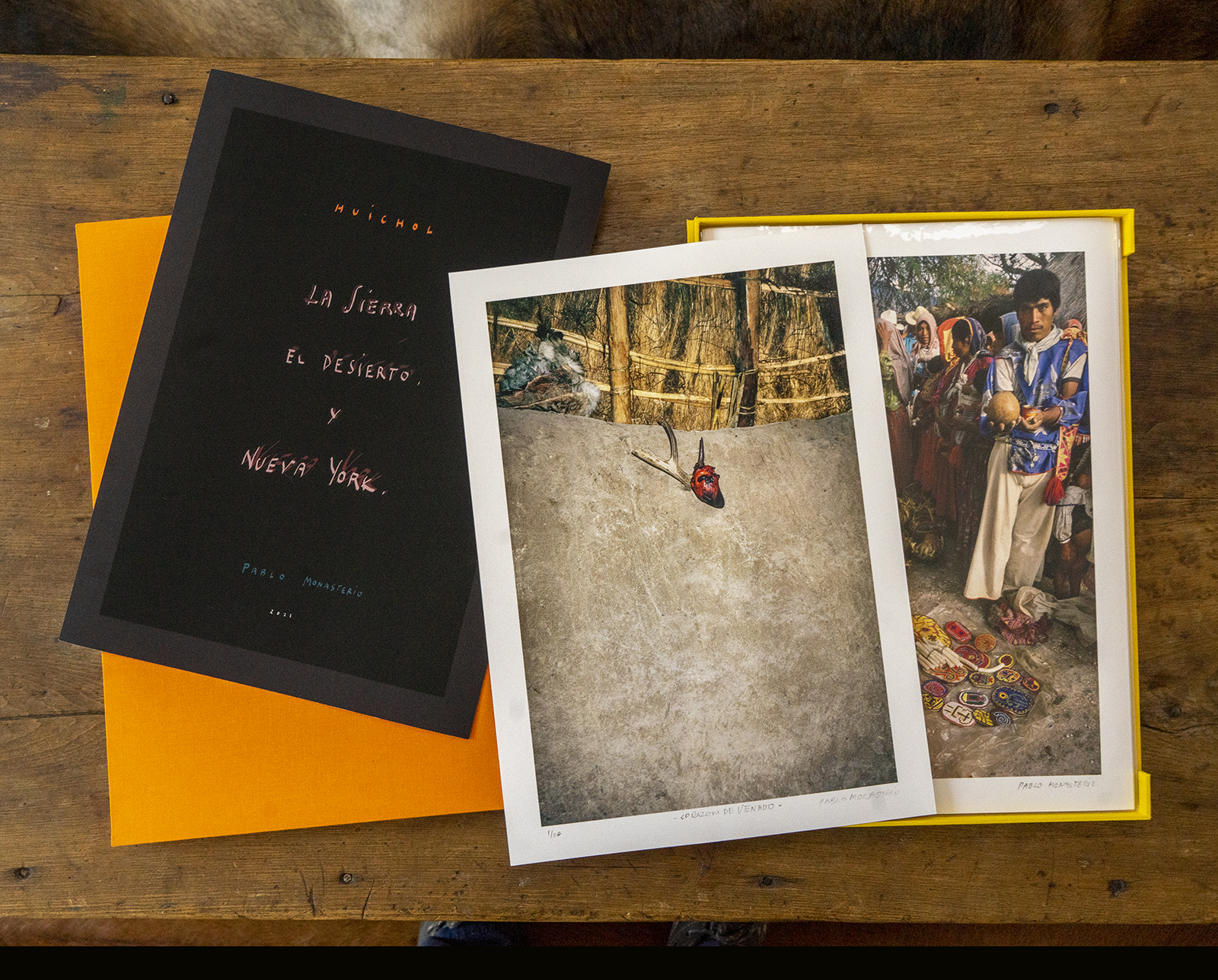
Approximate view with unframed print. Ask for exact available dimensions
Pablo Ortiz-Monasterio
“Huichol: mountain, desert, New York”, Bandera
1995-2021
Contemporary inkjet print.
Available in 2 sizes:
50 x 67 cm
110 x 84 cm
(Included in Special Edition Portfolio ¨Huichol¨)
Ed. 5 + 2 P.A. e/E
50 x 67 cm
“…The photographs of the Huichol by Pablo Ortiz Monasterio—taken on some twenty trips over the past three decades—reveal abundant evidence of cultural survival (what the Huichol call “la costumbre”), made possible by their extraordinary resistance to the religious, nationalist, and economic forces that have long assaulted—and that continue to assault—Indigenous communities everywhere. Though Ortiz Monasterio is also an outsider, he does not operate—like the anthropologist Lumholtz or the etnographer Diguet—as an old-fashioned preservationist, nor is he confident in the superiority of Western culture, nor is his work only destined for museum vitrines or archives. Rather, these complex images are the result of long and patient attempts at negotiation and collaboration, of working with the Huichol, amongst them, and ultimately making pictures as much for them as for audiences far from the Sierra Madre. In 1996, Fernando Ortiz Monasterio, an ecologist and engineer, was invited to design a bridge to allow the Huichol to safely cross a deep riverbed that became an impassable and dangerous torrent during the summer rains. An image by his brother Pablo records the bloody sacred sacrifice that celebrated its completion, just as he later documented a Huichol pilgrimage to another suspension bridge, in distant Brooklyn. Perhaps the only ethical position of the contemporary photographer engaged with Indigenous subjects is to work as a bridge or conduit, as a sanctioned recorder of sacrifices, pilgrimages, and other ceremonies—some more secret than others. These remain in the hands of the Huichol, and none of us will ever truly comprehend their spiritual meanings.” James Oles, Phd. Art Historian

Approximate view with unframed print. Ask for exact available dimensions
Pablo Ortiz-Monasterio
Huichol; sierra, desierto y Nueva York: Bastón de agua
1995-2021
Contemporary inkjet print.
Available in 2 sizes:
50 x 67 cm
110 x 84 cm
(Included in Special Edition Portfolio ¨Huichol¨)
Ed. 5 + 2 P.A. e/E
50 x 67 cm
“…The photographs of the Huichol by Pablo Ortiz Monasterio—taken on some twenty trips over the past three decades—reveal abundant evidence of cultural survival (what the Huichol call “la costumbre”), made possible by their extraordinary resistance to the religious, nationalist, and economic forces that have long assaulted—and that continue to assault—Indigenous communities everywhere. Though Ortiz Monasterio is also an outsider, he does not operate—like the anthropologist Lumholtz or the etnographer Diguet—as an old-fashioned preservationist, nor is he confident in the superiority of Western culture, nor is his work only destined for museum vitrines or archives. Rather, these complex images are the result of long and patient attempts at negotiation and collaboration, of working with the Huichol, amongst them, and ultimately making pictures as much for them as for audiences far from the Sierra Madre. In 1996, Fernando Ortiz Monasterio, an ecologist and engineer, was invited to design a bridge to allow the Huichol to safely cross a deep riverbed that became an impassable and dangerous torrent during the summer rains. An image by his brother Pablo records the bloody sacred sacrifice that celebrated its completion, just as he later documented a Huichol pilgrimage to another suspension bridge, in distant Brooklyn. Perhaps the only ethical position of the contemporary photographer engaged with Indigenous subjects is to work as a bridge or conduit, as a sanctioned recorder of sacrifices, pilgrimages, and other ceremonies—some more secret than others. These remain in the hands of the Huichol, and none of us will ever truly comprehend their spiritual meanings.” James Oles, Phd. Art Historian

Approximate view with unframed print. Ask for exact available dimensions
Pablo Ortiz-Monasterio
“Huichol: mountain, desert, New York”, Marcelino NY
1995-2021
Contemporary Inkjet on cotton
Available in 2 sizes:
1995-2021
Contemporary inkjet print.
Available in 2 sizes:
50 x 67 cm
110 x 84 cm
(Included in Special Edition Portfolio ¨Huichol¨)
Ed. 5 + 2 P.A. e/E
50 x 67 cm
“…The photographs of the Huichol by Pablo Ortiz Monasterio—taken on some twenty trips over the past three decades—reveal abundant evidence of cultural survival (what the Huichol call “la costumbre”), made possible by their extraordinary resistance to the religious, nationalist, and economic forces that have long assaulted—and that continue to assault—Indigenous communities everywhere. Though Ortiz Monasterio is also an outsider, he does not operate—like the anthropologist Lumholtz or the etnographer Diguet—as an old-fashioned preservationist, nor is he confident in the superiority of Western culture, nor is his work only destined for museum vitrines or archives. Rather, these complex images are the result of long and patient attempts at negotiation and collaboration, of working with the Huichol, amongst them, and ultimately making pictures as much for them as for audiences far from the Sierra Madre. In 1996, Fernando Ortiz Monasterio, an ecologist and engineer, was invited to design a bridge to allow the Huichol to safely cross a deep riverbed that became an impassable and dangerous torrent during the summer rains. An image by his brother Pablo records the bloody sacred sacrifice that celebrated its completion, just as he later documented a Huichol pilgrimage to another suspension bridge, in distant Brooklyn. Perhaps the only ethical position of the contemporary photographer engaged with Indigenous subjects is to work as a bridge or conduit, as a sanctioned recorder of sacrifices, pilgrimages, and other ceremonies—some more secret than others. These remain in the hands of the Huichol, and none of us will ever truly comprehend their spiritual meanings.” James Oles, Phd. Art Historian

Approximate view with unframed print. Ask for exact available dimensions
Pablo Ortiz-Monasterio
“Huichol: mountain, desert, New York”, Marcelino Sierra
Contemporary Inkjet on cotton
Available in two formats:
58x45 cm
110x82 cm
(Included in portfolio:¨Huichol¨)
Ed. 5 + 2 P.A.
27.9 x 38 cm

Approximate view with unframed print. Ask for exact available dimensions
Pablo Ortiz-Monasterio
“Huichol: mountain, desert, New York”, Caminata
Contemporary Inkjet on cotton
Available in 2 sizes:
58x45 cm
110x84cm
(Included in Special Edition Portfolio ¨Huichol¨)
Ed. 5 + 2 P.A.
27.9 x 38 cm
Impresión piezográfica firmada al frente

Approximate view with unframed print. Ask for exact available dimensions
Pablo Ortiz-Monasterio
“Huichol: mountain, desert, New York”, Peyote
Contemporary Inkjet on cotton
Available in 2 sizes:
58x45 cm
110x84cm
(Included in Special Edition Portfolio ¨Huichol¨)
Ed. 5 + 2 P.A.
27.9 x 38 cm
Impresión piezográfica firmada al frente

Approximate view with unframed print. Ask for exact available dimensions
Pablo Ortiz-Monasterio
“Huichol: mountain, desert, New York”, Desierto
1995-2021
Contemporary inkjet print.
Available in 2 sizes:
50 x 67 cm
110 x 84 cm
(Included in Special Edition Portfolio ¨Huichol¨)
Ed. 5 + 2 P.A. e/E
67 x 50 cm
“…The photographs of the Huichol by Pablo Ortiz Monasterio—taken on some twenty trips over the past three decades—reveal abundant evidence of cultural survival (what the Huichol call “la costumbre”), made possible by their extraordinary resistance to the religious, nationalist, and economic forces that have long assaulted—and that continue to assault—Indigenous communities everywhere. Though Ortiz Monasterio is also an outsider, he does not operate—like the anthropologist Lumholtz or the etnographer Diguet—as an old-fashioned preservationist, nor is he confident in the superiority of Western culture, nor is his work only destined for museum vitrines or archives. Rather, these complex images are the result of long and patient attempts at negotiation and collaboration, of working with the Huichol, amongst them, and ultimately making pictures as much for them as for audiences far from the Sierra Madre. In 1996, Fernando Ortiz Monasterio, an ecologist and engineer, was invited to design a bridge to allow the Huichol to safely cross a deep riverbed that became an impassable and dangerous torrent during the summer rains. An image by his brother Pablo records the bloody sacred sacrifice that celebrated its completion, just as he later documented a Huichol pilgrimage to another suspension bridge, in distant Brooklyn. Perhaps the only ethical position of the contemporary photographer engaged with Indigenous subjects is to work as a bridge or conduit, as a sanctioned recorder of sacrifices, pilgrimages, and other ceremonies—some more secret than others. These remain in the hands of the Huichol, and none of us will ever truly comprehend their spiritual meanings.” James Oles, Phd. Art Historian

Approximate view with unframed print. Ask for exact available dimensions
Pablo Ortiz-Monasterio
“Huichol: mountain, desert, New York”, Tiempo sagrado
Contemporary Inkjet on cotton
Available in 2 sizes:
58x45 cm
110x84cm
(Included in Special Edition Portfolio ¨Huichol¨)
Ed. 5 + 2 P.A.
27.9 x 38 cm
Impresión piezográfica firmada al frente

Approximate view with unframed print. Ask for exact available dimensions
Pablo Ortiz-Monasterio
“Huichol: mountain, desert, New York”, Corazón
Contemporary Inkjet on cotton
Available in 2 sizes:
58x45 cm
110x84cm
(Included in Special Edition Portfolio ¨Huichol¨)
Ed. 5 + 2 P.A.
27.9 x 38 cm
Impresión piezográfica firmada al frente

Approximate view with unframed print. Ask for exact available dimensions
Pablo Ortiz-Monasterio
“Huichol: mountain, desert, New York”, Huicholes Brooklyn
Contemporary Inkjet on cotton
Available in 2 sizes:
28.3x41cm
110x84cm
(Included in Special Edition Portfolio ¨Huichol¨)
Ed. 5 + 2 P.A.
27.9 x 38 cm
Impresión piezográfica firmada al frente

Approximate view with unframed print. Ask for exact available dimensions
Pablo Ortiz-Monasterio
Border’s Walls, Tijuana: The line
2017
Triptych Ed. 3
Available in singles (Ed. 6)
Archival pigment print
290 x 79 cm
Border’s Walls, Tijuana (2017 - ongoing). “Mexico’s Northern frontier is painful. The richest country on the globe meets an “underdeveloped” one. In 1846, the US Army invaded Mexico, ending with a final appropriation of half from its original territory, which moved the border to its actual position. During the XX century the efforts to shield the frontier begun and on this XXI century, Trump is determined to built a great wall from the Atlantic to the Pacific. The triptych from the Border’s Wall series: Tijuana —emblematic border’s city— runs over this story. Who is the owner of the land? Does the original inhabitants have rights? Walls are able to shield a country?” Pablo Ortiz Monasterio. Mexico City, 2018.

Approximate view with unframed print. Ask for exact available dimensions
Pablo Ortiz-Monasterio
Border’s Walls, Tijuana: The line
2017
Single Ed. 6
Archival pigment print
88.4 x 58 cm
Border’s Walls, Tijuana (2017 - ongoing). “Mexico’s Northern frontier is painful. The richest country on the globe meets an “underdeveloped” one. In 1846, the US Army invaded Mexico, ending with a final appropriation of half from its original territory, which moved the border to its actual position. During the XX century the efforts to shield the frontier begun and on this XXI century, Trump is determined to built a great wall from the Atlantic to the Pacific. The triptych from the Border’s Wall series: Tijuana —emblematic border’s city— runs over this story. Who is the owner of the land? Does the original inhabitants have rights? Walls are able to shield a country?” Pablo Ortiz Monasterio. Mexico City, 2018.

Approximate view with unframed print. Ask for exact available dimensions
Pablo Ortiz-Monasterio
Border’s Walls, Tijuana: The line
2017
Single Ed. 6
Archival pigment print
88.4 x 58 cm
Border’s Walls, Tijuana (2017 - ongoing). “Mexico’s Northern frontier is painful. The richest country on the globe meets an “underdeveloped” one. In 1846, the US Army invaded Mexico, ending with a final appropriation of half from its original territory, which moved the border to its actual position. During the XX century the efforts to shield the frontier begun and on this XXI century, Trump is determined to built a great wall from the Atlantic to the Pacific. The triptych from the Border’s Wall series: Tijuana —emblematic border’s city— runs over this story. Who is the owner of the land? Does the original inhabitants have rights? Walls are able to shield a country?” Pablo Ortiz Monasterio. Mexico City, 2018.
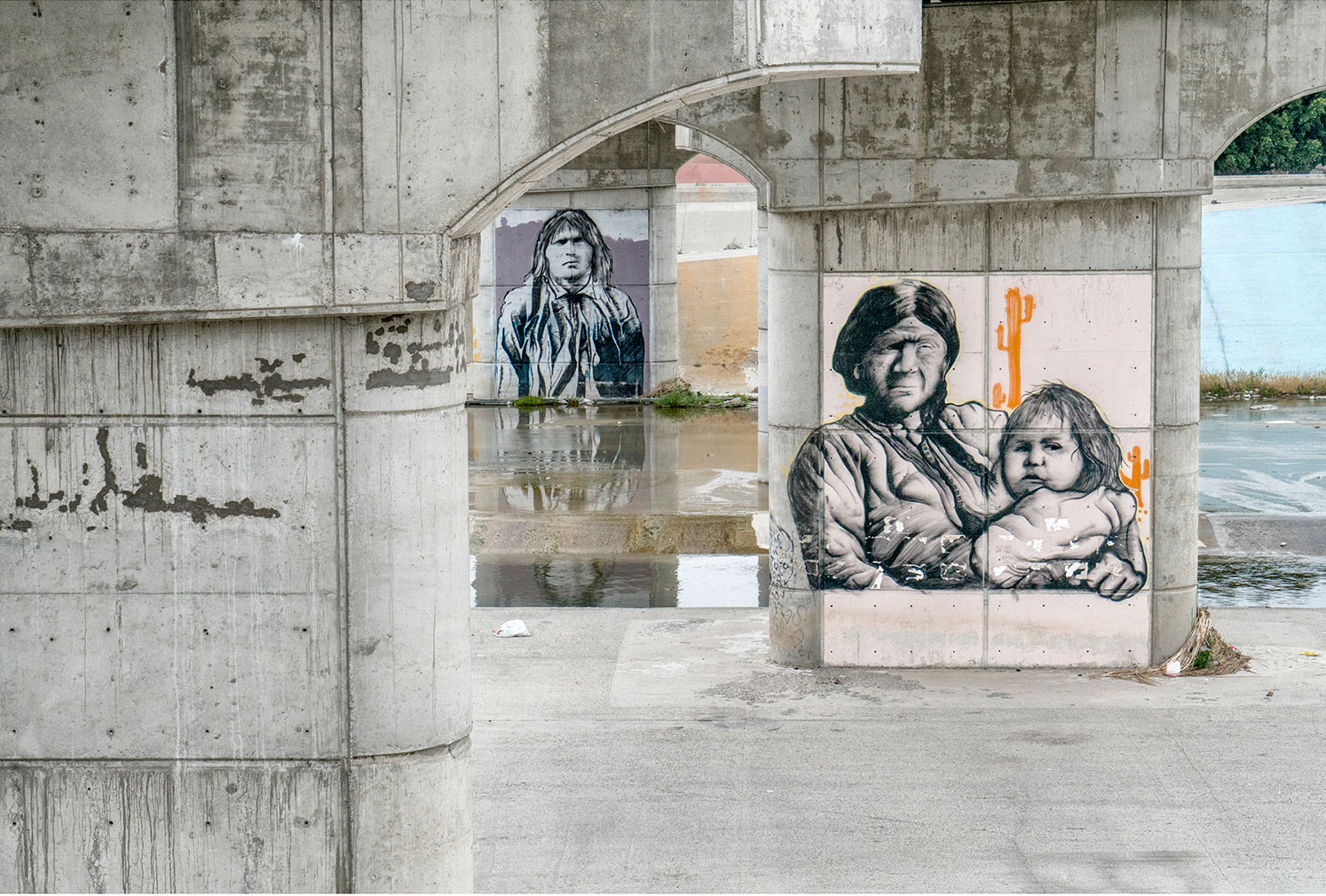
Approximate view with unframed print. Ask for exact available dimensions
Pablo Ortiz-Monasterio
Border’s Walls, Tijuana: The line
2017
Single Ed. 6
Archival pigment print
88.4 x 58 cm
Border’s Walls, Tijuana (2017 - ongoing). “Mexico’s Northern frontier is painful. The richest country on the globe meets an “underdeveloped” one. In 1846, the US Army invaded Mexico, ending with a final appropriation of half from its original territory, which moved the border to its actual position. During the XX century the efforts to shield the frontier begun and on this XXI century, Trump is determined to built a great wall from the Atlantic to the Pacific. The triptych from the Border’s Wall series: Tijuana —emblematic border’s city— runs over this story. Who is the owner of the land? Does the original inhabitants have rights? Walls are able to shield a country?” Pablo Ortiz Monasterio. Mexico City, 2018.

Approximate view with unframed print. Ask for exact available dimensions
Pablo Ortiz-Monasterio
Desparecen: Untitled
2016
Ed. 5 + 2 A.P.
Archival pigment print
80 x 60 cm
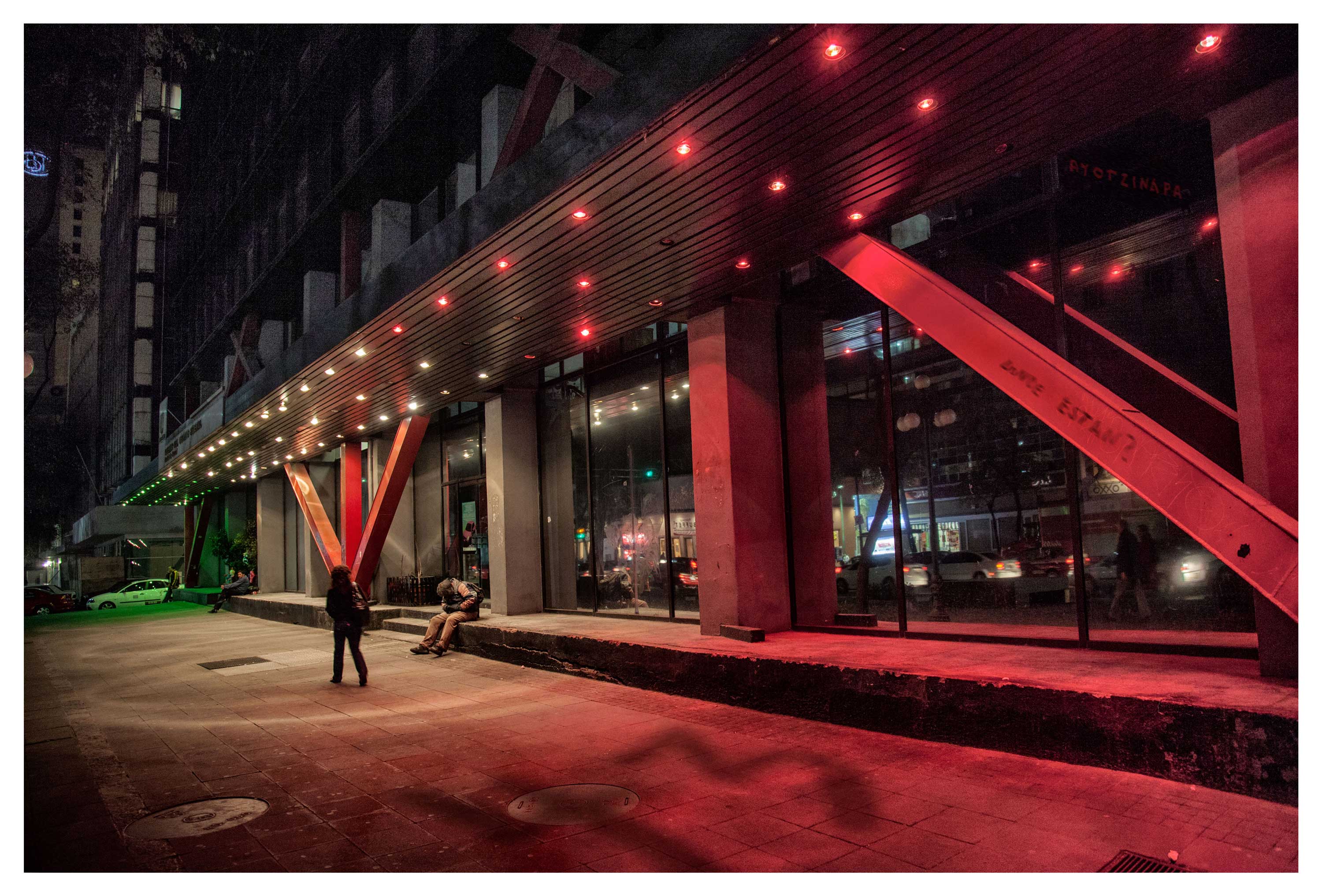
Approximate view with unframed print. Ask for exact available dimensions
Pablo Ortiz-Monasterio
Akadem Gorododok: Novossibirsk’s Girl
2014
Ed. 10 + 2 A.P.
Archival pigment print
130 x 104 cm
Akadem Gorodok (2014). An invitation by the Russian Ministry of Culture to a selected group of international preeminent artists brought Pablo Ortiz Monasterio to make this series of contemporary photo published as a photo book with a text by José Manuel Prieto, the Latin American authority in Russian History, with the prestigious photography editorial house RM based in Spain. Ortiz Monasterio shows his original view from the iconic scientific city located near Novosibirsk, which seems to arrived directly from a time tunnel. His images abundant in information, color components of our industrial days represent some of the few images of those premises whose laboratories dedicated to observe the elemental particles behavior, still have international recognition while reveal a certain unexpected aesthetic that pendules between anachronism and futurism.

Approximate view with unframed print. Ask for exact available dimensions
Pablo Ortiz-Monasterio
Akadem Gorododok: Organic Chemistry Lab
2014
Ed. 10 + 2 A.P.
Archival pigment print
110 x 74 cm
Akadem Gorodok (2014). An invitation by the Russian Ministry of Culture to a selected group of international preeminent artists brought Pablo Ortiz Monasterio to make this series of contemporary photo published as a photo book with a text by José Manuel Prieto, the Latin American authority in Russian History, with the prestigious photography editorial house RM based in Spain. Ortiz Monasterio shows his original view from the iconic scientific city located near Novosibirsk, which seems to arrived directly from a time tunnel. His images abundant in information, color components of our industrial days represent some of the few images of those premises whose laboratories dedicated to observe the elemental particles behavior, still have international recognition while reveal a certain unexpected aesthetic that pendules between anachronism and futurism.

Approximate view with unframed print. Ask for exact available dimensions
Pablo Ortiz-Monasterio
Akadem Gorododok: Particle Accelerator
2014
Ed. 10 + 2 A.P.
Archival pigment print
150 x 100 cm
Akadem Gorodok (2014). An invitation by the Russian Ministry of Culture to a selected group of international preeminent artists brought Pablo Ortiz Monasterio to make this series of contemporary photo published as a photo book with a text by José Manuel Prieto, the Latin American authority in Russian History, with the prestigious photography editorial house RM based in Spain. Ortiz Monasterio shows his original view from the iconic scientific city located near Novosibirsk, which seems to arrived directly from a time tunnel. His images abundant in information, color components of our industrial days represent some of the few images of those premises whose laboratories dedicated to observe the elemental particles behavior, still have international recognition while reveal a certain unexpected aesthetic that pendules between anachronism and futurism.

Approximate view with unframed print. Ask for exact available dimensions
Pablo Ortiz-Monasterio
Akadem Gorododok: Stabilizer
2014
Ed. 10 + 2 A.P.
Archival pigment print
150 x 100 cm
Akadem Gorodok (2014). An invitation by the Russian Ministry of Culture to a selected group of international preeminent artists brought Pablo Ortiz Monasterio to make this series of contemporary photo published as a photo book with a text by José Manuel Prieto, the Latin American authority in Russian History, with the prestigious photography editorial house RM based in Spain. Ortiz Monasterio shows his original view from the iconic scientific city located near Novosibirsk, which seems to arrived directly from a time tunnel. His images abundant in information, color components of our industrial days represent some of the few images of those premises whose laboratories dedicated to observe the elemental particles behavior, still have international recognition while reveal a certain unexpected aesthetic that pendules between anachronism and futurism.
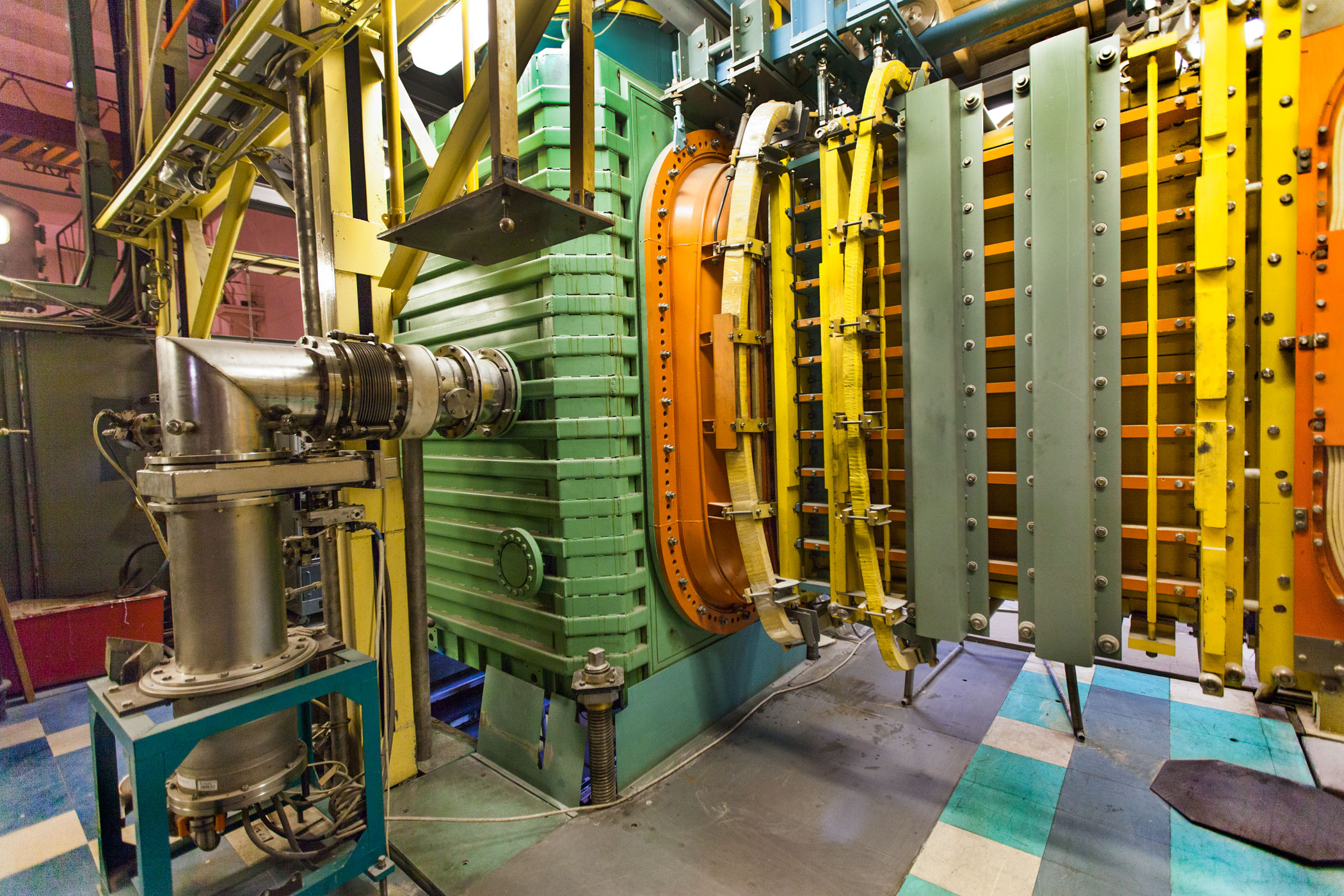
Approximate view with unframed print. Ask for exact available dimensions
Pablo Ortiz-Monasterio
Akadem Gorododok: Compressor
2014
Ed. 10 + 2 A.P.
Archival pigment print
150 x 100 cm
Akadem Gorodok (2014). An invitation by the Russian Ministry of Culture to a selected group of international preeminent artists brought Pablo Ortiz Monasterio to make this series of contemporary photo published as a photo book with a text by José Manuel Prieto, the Latin American authority in Russian History, with the prestigious photography editorial house RM based in Spain. Ortiz Monasterio shows his original view from the iconic scientific city located near Novosibirsk, which seems to arrived directly from a time tunnel. His images abundant in information, color components of our industrial days represent some of the few images of those premises whose laboratories dedicated to observe the elemental particles behavior, still have international recognition while reveal a certain unexpected aesthetic that pendules between anachronism and futurism.
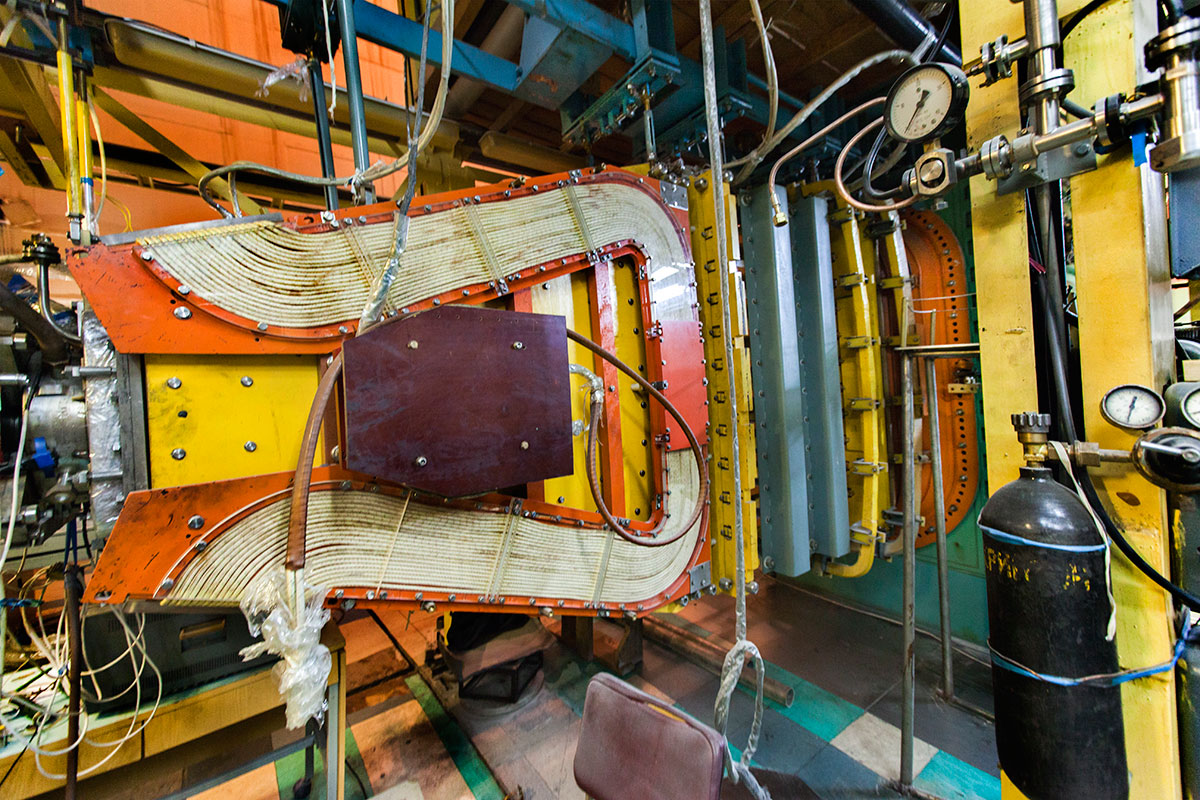
Approximate view with unframed print. Ask for exact available dimensions
Pablo Ortiz-Monasterio
Mexico, 1952.
Lives and works in Mexico City.
Considered one of the preeminent Latin American photographers, in the span of his thirty-years career, Pablo Ortiz Monasterio has published more than twenty books of his photographic work. The Last City, with a text by the José Emilio Pacheco (Premio Miguel de Cervantes given by the King of Spain) received the Best photo book by Spring Photo Fest Barcelona and the Gold Eye Award by the Festival des Trois Continents, 1997, France.
Ortiz Monasterio has gained individual exhibitions at Mexico’s Palacio Bellas Artes, Museo de Arte Moderno de México, Mexico's National Museum of Photography: Centro de la Imagen, to name a few, as well as national museums from USA, Brazil, Argentina, Venezuela, Ecuador, Cuba, Spain, UK, France, Netherlands, Portugal and Italy. His work illustrates the iconic exhibition Soulèvements / Sublevaciones, curated by Georges Didi-Huberman, which initiated at Le Musée Jeu de Paume (Paris), currently on view at Museo Universitario de Arte Contemporáneo: MUAC UNAM (Mexico City).
In 2001 he was invited as a curator at the PhotoEspaña festival of Madrid. Ortiz Monasterio has taught workshops on photography and editing in the United States, Cuba, Spain, Argentina, Ecuador, Brazil and Mexico.
Founding member of the Mexican Council of Photography, in 1994 he founded the El Centro de la Imagen. Ortiz Monasterio has directed three Mexican publishing projects: the magazine Luna Cornea, Indian River Light, and Mexico’s culture ministry’s pocket art book series Círculo de Arte. His work has been awarded at Mexico Cities Bienal de fotografía, and the Golden Eye in France and the Award for Best Photographic Book of 1996-1997, granted by the Spring Festival Photo of Barcelona, for his book The Last City.
Available works:
Border’s Walls, Tijuana (2017 - ongoing). “Mexico’s Northern frontier is painful. The richest country on the globe meets an “underdeveloped” one. In 1846, the US Army invaded Mexico, ending with a final appropriation of half from its original territory, which moved the border to its actual position. During the XX century the efforts to shield the frontier begun and on this XXI century, Trump is determined to built a great wall from the Atlantic to the Pacific.
The triptych from the Border’s Wall series: Tijuana —emblematic border’s city— runs over this story. Who is the owner of the land? Does the original inhabitants have rights? Walls are able to shield a country?” Pablo Ortiz Monasterio. Mexico City, 2018.
Akadem Gorodok (2014). An invitation by the Russian Ministry of Culture to a selected group of international preeminent artists brought Pablo Ortiz Monasterio to make this series of contemporary photo published as a photo book with a text by José Manuel Prieto, the Latin American authority in Russian History, with the prestigious photography editorial house RM based in Spain. Ortiz Monasterio shows his original view from the iconic scientific city located near Novosibirsk, which seems to arrived directly from a time tunnel. His images abundant in information, color components of our industrial days represent some of the few images of those premises whose laboratories dedicated to observe the elemental particles behavior, still have international recognition while reveal a certain unexpected aesthetic that pendules between anachronism and futurism.